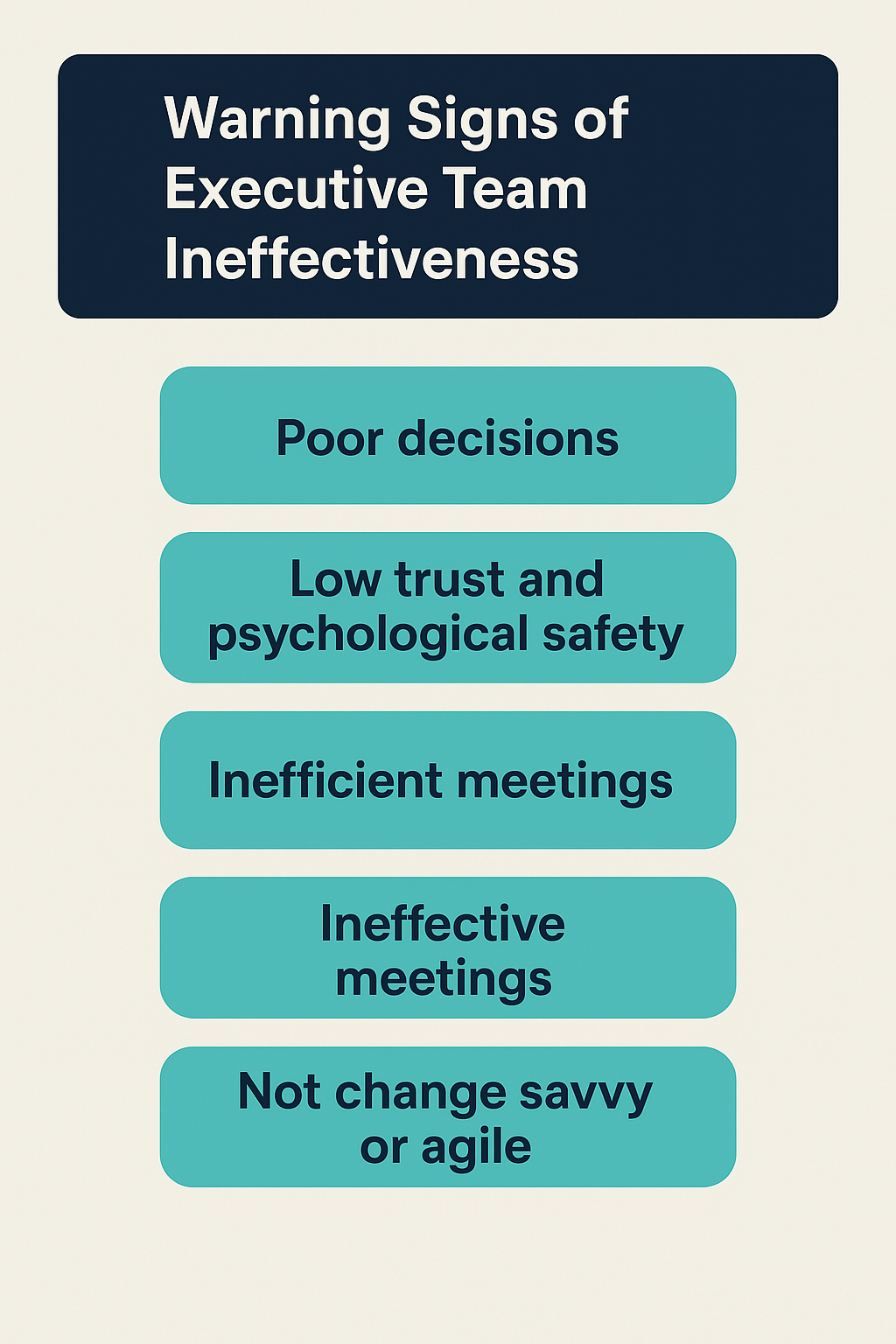Executive team effectiveness is one of the strongest predictors of business performance. When the senior team works well together, it has a positive ripple effect throughout the organization. It speeds up decision-making, strengthens execution, and improves morale. But high-performing teams don’t happen by accident.
In our work with executive teams across industries, we’ve found that five lagging indicators are especially useful to monitor. These indicators don’t drive team effectiveness directly. Instead, they are signs of how well the team is functioning. Trouble in these areas is often a warning that deeper issues are at play.
Here are five critical lagging indicators and why they matter for executive team effectiveness:

1. Poor decisions
Speed and quality in decision-making are hallmarks of effective executive teams. Top teams don’t wait for consensus on everything, but they also avoid rushing past important input. They clarify who decides, involve the right people, and move forward with confidence.
Try this: Use the RACI framework to define roles in major decisions. This reduces confusion and speeds up execution. Make sure that the right people are in the room for key decisions.
2. Low trust and psychological safety
No team performs at its best without trust. The strongest executive teams can challenge one another without fear, admit mistakes, and ask for help. Psychological safety isn’t about avoiding conflict. It’s about making space for honest and respectful dialogue.
Try this: Track who speaks up, who stays quiet, whether people take risks in conversation, and whether people are giving feedback to each other. These are clues to your team’s level of trust.
3. Inefficient meetings
If your calendar is full of leadership meetings, you already know that time spent doesn’t always equal progress. Top teams make meetings count. That means clear agendas, focused discussions, real decisions, and follow-through. Efficiency saves time.
Try this: Assign a rabbit hole monitor to ensure the team doesn’t dive too deep into the detail of a non-essential topic.
4. Ineffective meetings
It’s not just about keeping meetings short. It’s about making them count. Effective executive team meetings create clarity, alignment, and momentum. The best teams stay focused on the right topics, surface real issues, and walk away with shared understanding and clear action items.
Try this: Craft better agendas. Do your meetings routinely lead to progress? If not, the agenda or format may need a reset.
5. Not change savvy or agile
In today’s business climate, agility is essential. High-performing teams pivot quickly, absorb new information, and adapt without losing alignment. It’s less about rigid plans and more about flexible priorities and strong communication.
Try this: Assess how fast your team is adapting to the AI revolution.
Want a Fast Way to Improve Executive Team Effectiveness?
Executive team effectiveness is not just about individual talent. It’s about how the team operates when stakes are high and time is tight. If you’re looking for a fast, focused way to understand how your team is really doing, reach out about our Team Effectiveness Profile (TEP). It’s a simple tool that gives you immediate insight into what’s working, what’s not, and where to focus next.
If your executive team is aiming to reach the next level of performance, we can help. At KSE Leadership, we work with senior teams to strengthen trust, sharpen execution, and improve how leaders work together. Whether you’re navigating change or preparing for growth, we’ll help you build the habits that drive lasting executive team effectiveness.


No comment yet, add your voice below!